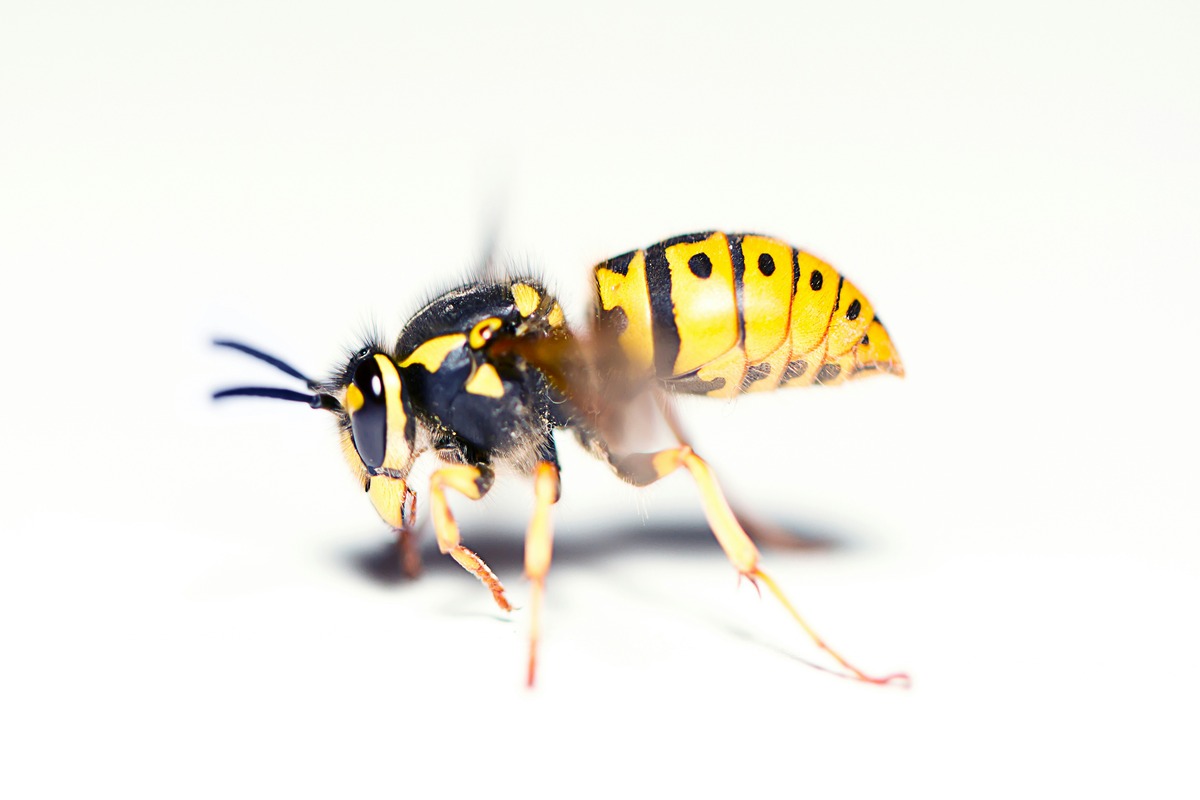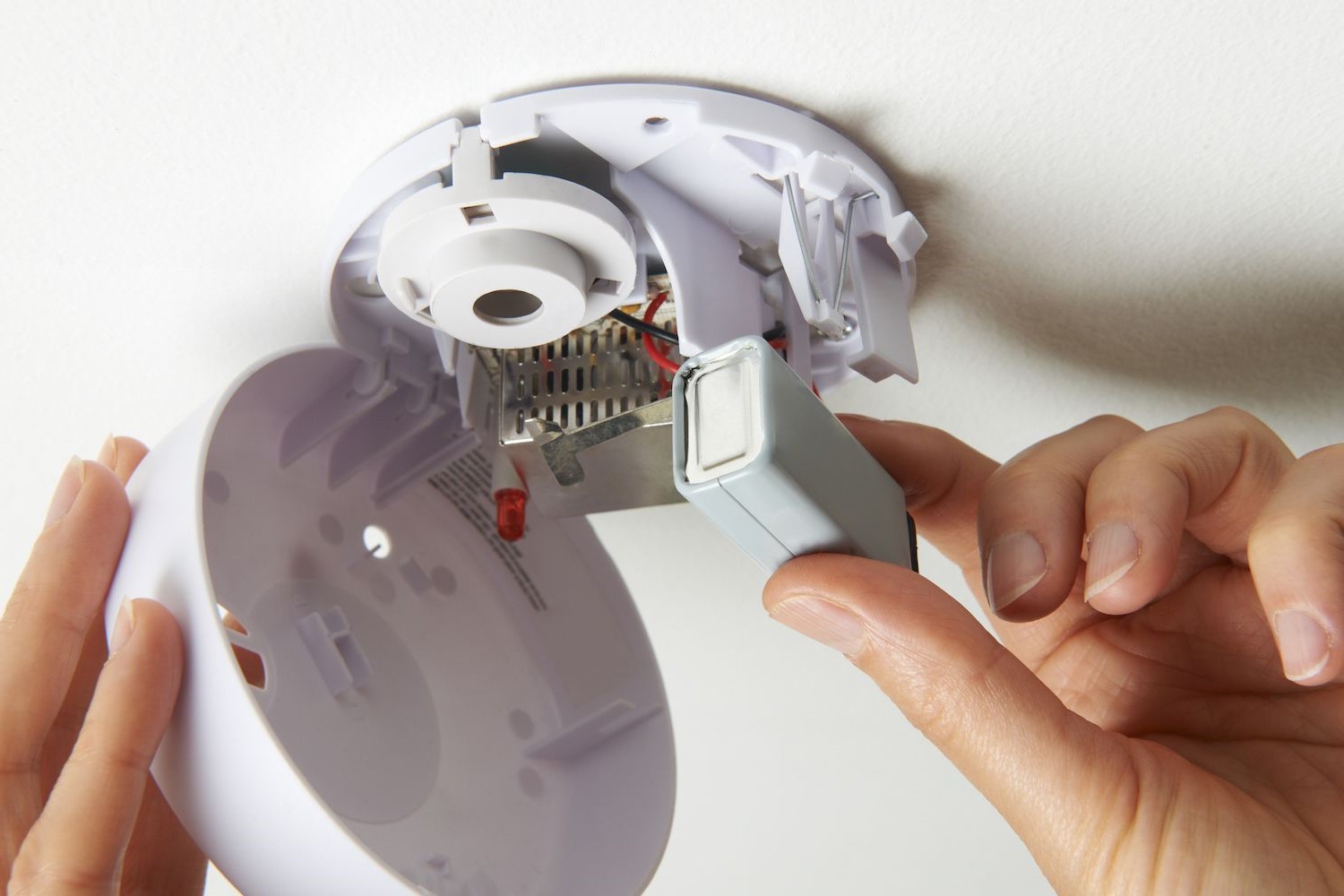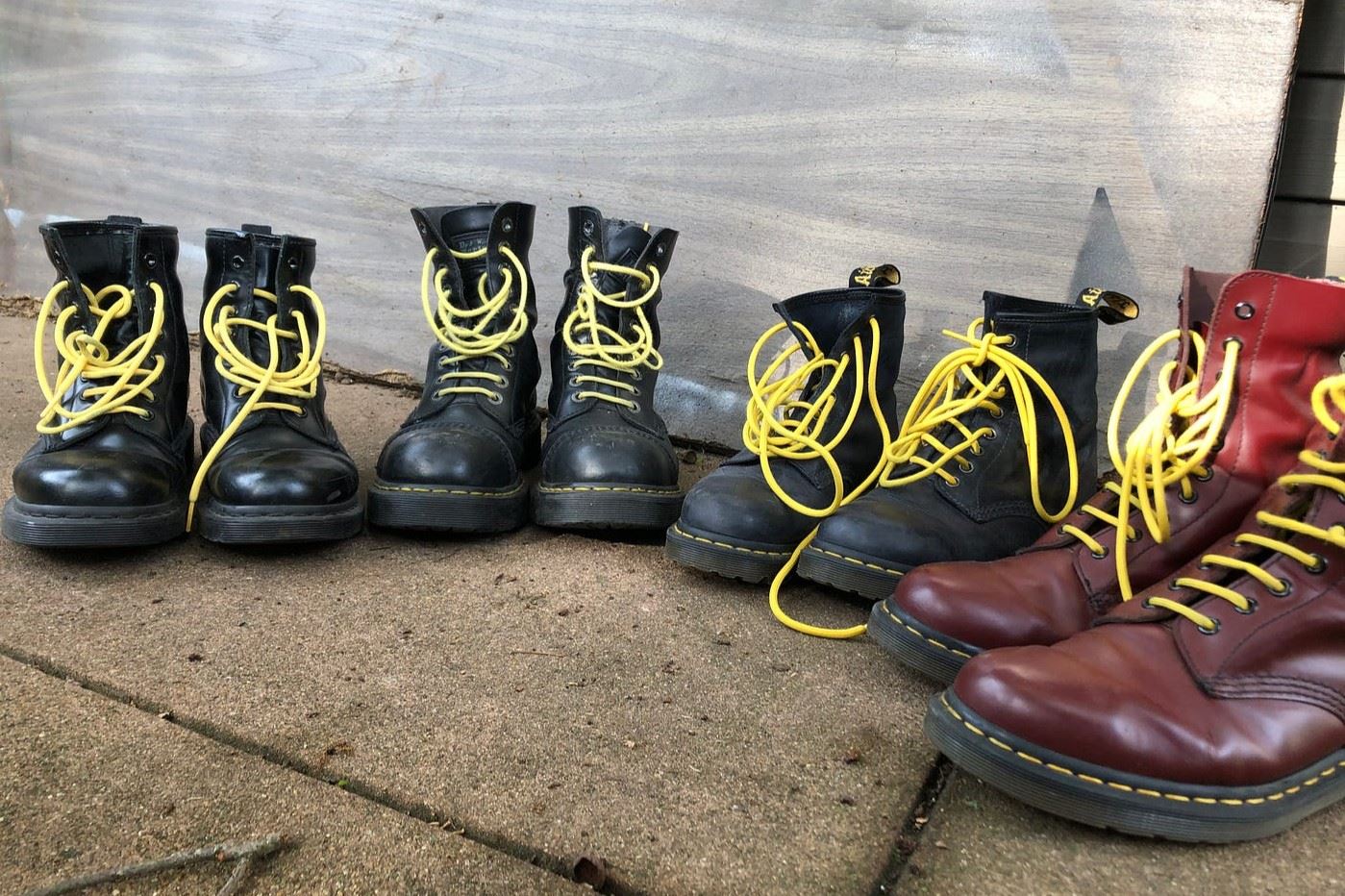Home>Science>Yellow Jackets Vs. Hornets: Unveiling The Deadly Truth And How To Protect Your Home!


Science
Yellow Jackets Vs. Hornets: Unveiling The Deadly Truth And How To Protect Your Home!
Published: February 3, 2024
Discover the science behind the deadly truth of yellow jackets vs. hornets and learn how to protect your home from these pests. Gain valuable insights and tips to safeguard your home!
(Many of the links in this article redirect to a specific reviewed product. Your purchase of these products through affiliate links helps to generate commission for Noodls.com, at no extra cost. Learn more)
Table of Contents
Introduction
In the realm of buzzing insects, yellow jackets and hornets stand out as formidable creatures that often evoke fear and concern. These flying insects, known for their distinctive yellow and black markings, possess potent stingers and aggressive behavior, making them a force to be reckoned with. As summer approaches and outdoor activities become more prevalent, it's crucial to gain a deeper understanding of these creatures and how to coexist with them safely.
Yellow jackets and hornets are often mistaken for one another due to their similar appearance and predatory nature. However, they belong to different genera within the Vespidae family. Yellow jackets are members of the Vespula and Dolichovespula genera, while hornets are classified under the Vespa genus. Despite their differences, both species share common traits that make them a potential threat to humans, especially when their nests are disturbed.
As we delve into the world of these aerial predators, it's essential to grasp the nuances of their physical characteristics, nesting habits, diet, behavior, and the potential dangers they pose. Moreover, understanding effective strategies to safeguard our homes and outdoor spaces from their presence is paramount for ensuring the safety and well-being of ourselves and our loved ones.
Let's embark on an enlightening journey to unravel the mysteries of yellow jackets and hornets, gaining valuable insights into their world and discovering practical measures to mitigate the risks they pose. By arming ourselves with knowledge and adopting proactive approaches, we can coexist harmoniously with these creatures while safeguarding our homes and communities from their formidable presence.
What are Yellow Jackets and Hornets?
Yellow jackets and hornets are predatory insects belonging to the Vespidae family, renowned for their distinct yellow and black markings and formidable stingers. Despite their similar appearance and predatory nature, they belong to different genera within the Vespidae family. Yellow jackets are members of the Vespula and Dolichovespula genera, while hornets are classified under the Vespa genus.
These flying insects play vital roles in the ecosystem as efficient predators, preying on a variety of insects, including flies, caterpillars, and other pests. Their predatory nature makes them beneficial in controlling pest populations, contributing to the ecological balance. However, their aggressive behavior and potent stingers pose significant risks to humans, especially when their nests are disturbed.
Yellow jackets and hornets are social insects, living in colonies with a well-defined hierarchy. Their colonies typically consist of a queen, workers, and drones, each with specific roles and responsibilities. The queen, responsible for reproduction, lays eggs, while the workers undertake tasks such as foraging for food, expanding the nest, and protecting the colony. Drones, the male members, play a crucial role in mating with the queen to ensure the survival and expansion of the colony.
These insects are known for their territorial nature, fiercely defending their nests when they perceive a threat. Their aggressive defense mechanisms, including stinging repeatedly, can pose severe risks to individuals who inadvertently disturb their habitats. It's important to distinguish between these insects and other flying creatures to minimize potential encounters and mitigate the risks they pose.
Understanding the distinct characteristics and behaviors of yellow jackets and hornets is crucial for fostering coexistence while ensuring the safety of humans and pets. By gaining insights into their world and the intricacies of their existence, we can adopt proactive measures to minimize potential conflicts and protect our homes and outdoor spaces from their formidable presence.
Physical Characteristics
Yellow jackets and hornets exhibit distinct physical characteristics that set them apart from other flying insects. Understanding these traits is essential for identifying and differentiating between these formidable creatures.
Yellow Jackets
Yellow jackets, belonging to the Vespula and Dolichovespula genera, are relatively small in size, typically measuring around 10-16 mm in length. They are characterized by their vibrant yellow and black coloration, with a well-defined slender waist. Their smooth bodies and lack of dense body hair distinguish them from bees, contributing to their sleek and agile appearance.
These insects possess elongated wings that fold longitudinally when at rest, and their antennae are distinctly segmented, aiding in sensory perception and communication within the colony. Yellow jackets are equipped with potent stingers, capable of delivering painful and potentially dangerous stings, especially when provoked or threatened.
Hornets
Hornets, classified under the Vespa genus, are notably larger than yellow jackets, with an average length ranging from 19-35 mm. Their imposing size and robust build distinguish them from their smaller counterparts. Hornets feature striking yellow and black markings, with some species exhibiting reddish-brown hues as well.
One of the distinguishing features of hornets is their characteristic mandibles, which are adapted for capturing and dismembering prey. Their wings are broad and folded laterally when at rest, and their bodies are covered in fine hairs, giving them a more robust and textured appearance compared to yellow jackets.
Key Differences
While both yellow jackets and hornets share similar color patterns, their size and specific physical attributes serve as key distinguishing factors. Yellow jackets are smaller, sleeker, and possess a slender waist, while hornets are larger, more robust, and equipped with distinctive mandibles for hunting and feeding.
By familiarizing ourselves with the physical characteristics of these insects, we can effectively identify and differentiate between yellow jackets and hornets. This knowledge is invaluable for taking proactive measures to minimize potential encounters and mitigate the risks they pose, ultimately contributing to a safer and harmonious coexistence with these remarkable yet formidable creatures.
Nesting Habits
Yellow jackets and hornets exhibit distinct nesting habits, each tailored to their specific needs and environmental requirements. Understanding these nesting behaviors is essential for gaining insights into their preferred habitats and the potential risks they pose to human dwellings and outdoor spaces.
Yellow jackets are known for constructing their nests in various locations, ranging from underground burrows to concealed spaces within buildings and trees. These resourceful insects exhibit remarkable adaptability, enabling them to thrive in diverse environments. Their nests are typically constructed from paper-like materials, which they create by chewing wood fibers and mixing them with saliva. This unique construction material allows them to fashion sturdy and resilient nests that can endure environmental challenges.
In contrast, hornets are renowned for building large, intricate nests, often suspended from tree branches, shrubs, or human-made structures. These aerial nests, constructed from similar paper-like materials, showcase the remarkable craftsmanship of these insects. Hornets meticulously fashion multiple layers within their nests, providing ample space for the queen to lay eggs and the colony to expand. The intricate design and sheer size of hornet nests make them striking yet potentially hazardous features in outdoor settings.
Both yellow jackets and hornets display defensive behaviors when it comes to protecting their nests. They perceive any perceived threat to their colonies as a cause for aggressive action, posing significant risks to individuals who inadvertently disturb their habitats. It's essential to exercise caution and vigilance, especially during warmer months when these insects are most active.
By understanding the nesting habits of yellow jackets and hornets, we can proactively identify potential nesting sites and take preventive measures to minimize encounters and mitigate the risks they pose. This knowledge empowers us to safeguard our homes and outdoor spaces, fostering a harmonious coexistence with these remarkable yet formidable creatures.
Diet and Behavior
Yellow jackets and hornets exhibit distinct dietary preferences and behaviors, reflecting their roles as efficient predators and vital contributors to the ecological balance. Understanding their diet and behavior is essential for comprehending their impact on the ecosystem and the potential risks they pose to humans and other organisms.
Diet
Yellow jackets and hornets are carnivorous insects, preying on a wide range of invertebrates to fulfill their dietary needs. Their diet primarily consists of various insects, including flies, caterpillars, and other pests that are considered nuisances or agricultural threats. As voracious hunters, these insects play a crucial role in controlling pest populations, contributing to the natural equilibrium within ecosystems.
In addition to their predatory activities, yellow jackets and hornets also exhibit scavenging behavior, foraging for protein-rich food sources to sustain their colonies. They are attracted to sugary substances, such as nectar, fruits, and human food items, which serve as energy-rich supplements to their predominantly carnivorous diet. Their scavenging tendencies often bring them into close proximity with human environments, leading to potential conflicts and risks.
Behavior
Both yellow jackets and hornets are social insects, living in colonies with a well-defined hierarchy and division of labor. Their colonies typically consist of a queen, workers, and drones, each fulfilling specific roles essential for the survival and expansion of the colony. The queen is responsible for reproduction, laying eggs that give rise to the next generation of colony members. Workers undertake tasks such as foraging for food, expanding the nest, and defending the colony from potential threats. Drones, the male members, play a crucial role in mating with the queen to ensure the perpetuation of the colony.
These insects are known for their territorial and defensive behavior, fiercely protecting their nests and foraging territories from perceived threats. When agitated or provoked, they can exhibit aggressive tendencies, posing significant risks to individuals who inadvertently intrude upon their habitats. Their potent stingers and the ability to sting repeatedly make them formidable opponents when defending their colonies, necessitating caution and vigilance in their presence.
By gaining insights into the dietary preferences and behaviors of yellow jackets and hornets, we can appreciate their ecological significance while adopting proactive measures to minimize potential conflicts and mitigate the risks they pose. This knowledge empowers us to coexist harmoniously with these remarkable yet formidable creatures, contributing to the preservation of biodiversity and the well-being of our communities.
Dangers and Risks
Yellow jackets and hornets pose significant dangers and risks, especially when their nests are disturbed or when they perceive a threat to their colonies. Understanding these potential hazards is crucial for fostering a safe and harmonious coexistence with these formidable insects.
One of the primary dangers associated with yellow jackets and hornets is their aggressive defense mechanisms. When their nests are disturbed or when they perceive intrusions into their territories, these insects can unleash swift and relentless attacks. Their potent stingers, capable of delivering painful and potentially life-threatening stings, pose significant risks to individuals, especially those allergic to insect venom. The ability of these insects to sting repeatedly amplifies the severity of potential encounters, underscoring the importance of exercising caution and vigilance in their presence.
Furthermore, the territorial nature of yellow jackets and hornets contributes to the risks they pose. They establish and defend foraging territories around their nests, often overlapping with human-inhabited areas. This proximity increases the likelihood of encounters, especially during outdoor activities and gatherings. Their scavenging tendencies, attracted to sugary substances and human food items, can lead to unintended confrontations, heightening the potential dangers they pose.
In addition to their aggressive behavior, the sheer number of individuals within their colonies amplifies the risks associated with yellow jackets and hornets. A single nest can house hundreds or even thousands of these insects, creating a formidable force capable of inflicting widespread harm if provoked. Their presence in outdoor settings, such as parks, picnic areas, and residential neighborhoods, underscores the need for proactive measures to minimize potential conflicts and safeguard human safety.
For individuals allergic to insect stings, encounters with yellow jackets and hornets can have severe and life-threatening consequences. Anaphylactic reactions, characterized by swelling, difficulty breathing, and a drop in blood pressure, can occur rapidly following a sting. Prompt medical attention is crucial in such situations, emphasizing the critical nature of understanding and mitigating the risks posed by these insects.
By comprehending the dangers and risks associated with yellow jackets and hornets, we can adopt proactive strategies to minimize potential conflicts and safeguard ourselves and our communities. Heightened awareness, cautious behavior, and timely intervention in the event of stings are essential components of a comprehensive approach to mitigating the potential hazards posed by these remarkable yet formidable creatures.
Protecting Your Home from Yellow Jackets and Hornets
Protecting your home from the presence and potential risks posed by yellow jackets and hornets requires a proactive and comprehensive approach. By implementing effective strategies and preventive measures, you can minimize the likelihood of encounters and safeguard your living spaces from the formidable presence of these aerial predators.
-
Regular Inspections: Conduct regular inspections of your property to identify potential nesting sites and early signs of yellow jacket or hornet activity. Check for areas such as eaves, roof overhangs, wall voids, and shrubbery where these insects may establish their colonies.
-
Sealing Entry Points: Seal any gaps, cracks, or openings in your home's exterior to prevent yellow jackets and hornets from gaining access to indoor spaces. Pay particular attention to areas around windows, doors, vents, and utility entry points to minimize the risk of infiltration.
-
Proper Waste Management: Dispose of waste, particularly food scraps and sugary substances, in sealed containers to minimize the attraction of yellow jackets and hornets. Keep outdoor garbage bins tightly sealed and clear any spilled food or drink residues promptly.
-
Landscaping Practices: Maintain your landscaping by trimming shrubs, bushes, and trees to reduce potential nesting sites for these insects. Clear away debris and organic matter from your yard to minimize favorable conditions for nest building.
-
Professional Assistance: In cases where yellow jacket or hornet nests are identified in close proximity to your home, seek professional assistance for their safe and effective removal. Attempting to remove nests without the necessary expertise can lead to agitated swarms and heightened risks.
-
Educational Awareness: Educate your family members and neighbors about the risks associated with yellow jackets and hornets, emphasizing the importance of cautious behavior and prompt intervention in the event of stings. Heightened awareness contributes to a collective effort in minimizing potential conflicts.
-
Use of Traps: Consider using commercially available traps designed to capture yellow jackets and hornets. Place these traps in outdoor areas away from frequented spaces to reduce the presence of these insects around your home.
-
Protective Clothing: When engaging in outdoor activities that may bring you into close proximity with potential nesting sites, consider wearing long sleeves, pants, and closed-toe shoes to minimize exposure to stings.
By integrating these protective measures into your home maintenance and outdoor practices, you can create a safer and more secure environment while mitigating the risks posed by yellow jackets and hornets. Proactive vigilance and a commitment to preventive actions are essential components of fostering a harmonious coexistence with these remarkable yet formidable creatures.
Conclusion
In conclusion, the world of yellow jackets and hornets is marked by a delicate balance between their ecological significance and the potential risks they pose to humans and pets. These formidable insects, with their distinctive physical characteristics, nesting habits, dietary preferences, and defensive behaviors, command respect and caution in outdoor settings. As summer approaches and outdoor activities become more prevalent, it is imperative to arm ourselves with knowledge and proactive measures to coexist harmoniously with these aerial predators.
By unraveling the mysteries of yellow jackets and hornets, we have gained valuable insights into their world and the intricate dynamics of their existence. Their role as efficient predators, contributing to the control of pest populations, underscores their ecological significance. However, their aggressive behavior and potent stingers necessitate a comprehensive understanding of the potential dangers they pose, especially when their nests are disturbed.
The physical characteristics of yellow jackets and hornets, including their size, coloration, and nesting habits, serve as key identifiers for differentiating between these formidable insects. Understanding these traits empowers us to take proactive measures to minimize potential encounters and mitigate the risks they pose, ultimately contributing to a safer outdoor experience.
Moreover, the proactive strategies outlined for protecting our homes from the presence of yellow jackets and hornets emphasize the importance of vigilance and preventive actions. Regular inspections, proper waste management, and professional assistance for nest removal are essential components of a comprehensive approach to safeguarding our living spaces from the formidable presence of these insects.
As we navigate the complexities of coexisting with yellow jackets and hornets, it is crucial to foster educational awareness and a collective commitment to cautious behavior. By sharing knowledge about the risks associated with these insects and emphasizing the importance of prompt intervention in the event of stings, we contribute to a safer and more informed community.
In essence, our journey through the world of yellow jackets and hornets has provided valuable insights into their ecological roles, potential risks, and effective strategies for coexistence. By integrating knowledge, vigilance, and proactive measures, we can create a safer and more harmonious outdoor environment while respecting the remarkable yet formidable presence of these aerial predators.













